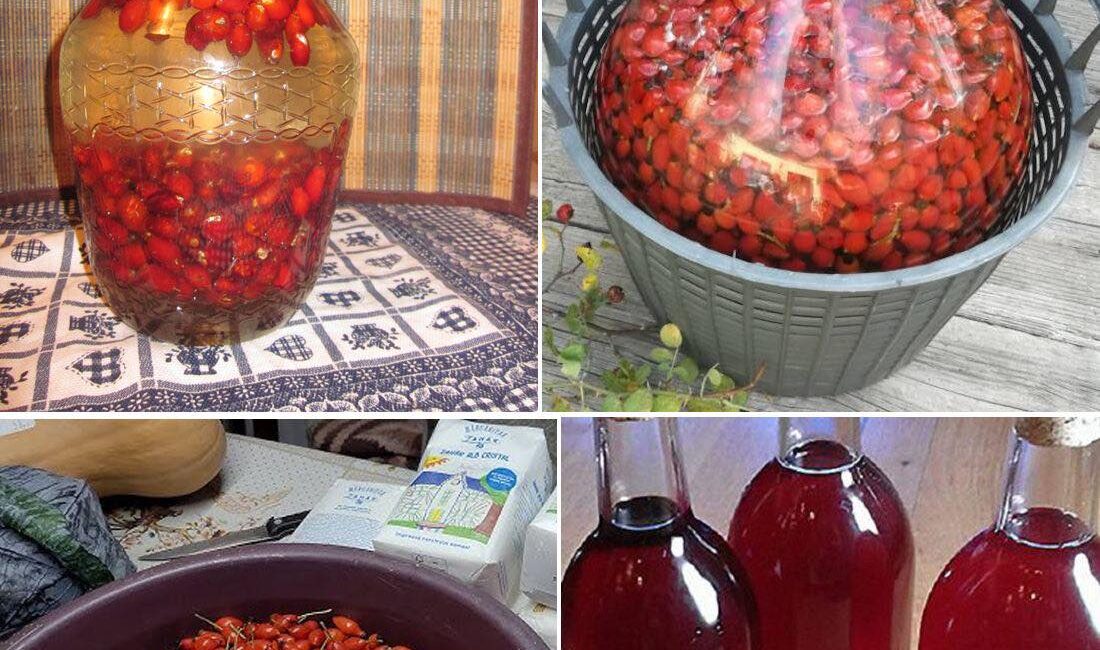Rosehip wine is a delightful, fragrant, and nutritious beverage that has been enjoyed for centuries. Not only is it delicious, but it’s also rich in vitamins, antioxidants, and minerals, making it a perfect choice for those who are looking for a natural, homemade drink with health benefits. If you have access to fresh rosehips, making rosehip wine is a fun and rewarding project. In this detailed guide, we will walk you through everything you need to know about preparing rosehip wine—from choosing the right rosehips to the step-by-step process of fermentation.
Why Choose Rosehip Wine?
Before diving into the recipe, let’s first explore why rosehip wine is worth making.
Health Benefits of Rosehip Wine
- Vitamin C Powerhouse: Rosehips are famous for their high vitamin C content. In fact, they contain far more vitamin C than oranges, making them a fantastic immune booster. By drinking rosehip wine, you can enjoy the benefits of vitamin C in a more enjoyable form than taking pills or supplements.
- Rich in Antioxidants: Rosehips are loaded with antioxidants, particularly flavonoids, which help to reduce inflammation and protect against oxidative stress. Drinking rosehip wine regularly can be a good way to support your overall health.
- Anti-inflammatory Properties: Rosehip wine may help reduce joint pain and inflammation, making it a great natural remedy for those suffering from arthritis or muscle pain.
- Supports Skin Health: The high vitamin C in rosehips supports the production of collagen, helping to maintain skin elasticity and health. Rosehip wine could thus play a role in maintaining youthful-looking skin.
- Digestive Health: Rosehip wine may promote better digestion and relieve digestive issues like bloating or constipation.
What You’ll Need for Rosehip Wine: Ingredients and Tools
Rosehip wine is surprisingly simple to make, but it requires some careful preparation. Below is a list of the ingredients and tools you’ll need to create this fragrant, vitamin-packed drink.
Ingredients
- Fresh Rosehips (2-3 pounds): Fresh rosehips are essential for this recipe. Make sure they are ripe and free from pesticides. Choose a variety of rose that produces large, plump hips (wild roses or garden varieties work well). You can also use dried rosehips, though fresh ones tend to provide a more aromatic wine.
- Sugar (4-5 cups): Sugar helps with fermentation and sweetens the wine. You can use white sugar, brown sugar, or a combination of both, depending on your preference.
- Water (1 gallon): Fresh, clean water is crucial for extracting the flavor and nutrients from the rosehips.
- Citric Acid (1 teaspoon): Citric acid will help balance the pH of the wine, which is important for successful fermentation and the development of the right flavors.
- Wine Yeast (1 packet): You’ll need wine yeast to start the fermentation process. You can use a general-purpose wine yeast or a specific strain that is suitable for fruity wines.
- Tannin (optional): Some people add a small amount of tannin (about 1/2 teaspoon) to give the wine more body and depth, though it’s not strictly necessary.
- Pectic Enzyme (optional): This helps break down the fruit’s pectin and ensures a clearer wine.
Tools
- Large Pot (6-8 quart capacity): For boiling the rosehips and extracting their juice.
- Fermentation Vessel (5-gallon glass or plastic carboy): This is where the wine will ferment.
- Straining Cloth or Cheesecloth: To strain the rosehips and other solids out of the mixture.
- Hydrometer (optional): To measure the sugar content of the liquid and help track the fermentation process.
- Airlock and Bung: Used for sealing the fermentation vessel and allowing gases to escape during fermentation.
- Bottles for Storage: After the wine has finished fermenting, you’ll need bottles to store it in. Glass wine bottles or any bottles with tight-sealing caps will work fine.
Step-by-Step Guide to Making Rosehip Wine
Now that we have the ingredients and tools ready, let’s dive into the step-by-step process of making rosehip wine.
Step 1: Harvesting and Preparing the Rosehips
If you’re harvesting your own rosehips, ensure they are fully ripe. They should be bright red or orange, depending on the variety, and free from any blemishes or signs of disease. It’s best to harvest them in late summer or early fall, after the first frost, as this can enhance their sweetness and flavor.
- Remove the stems and leaves from the rosehips.
- Rinse the rosehips under cool water to remove dirt and insects.
- Cut or crush the rosehips to release their juices. You can use a knife, food processor, or a potato masher to crush the rosehips. This helps to extract as much flavor and nutrients as possible.
Step 2: Boil the Rosehips
- Place the crushed rosehips into a large pot and add about 1 gallon of water.
- Bring the water to a boil and then reduce the heat to simmer for about 30-40 minutes. This step extracts the flavors and nutrients from the rosehips, creating a flavorful base for the wine.
- Stir occasionally to make sure the rosehips are fully submerged and cooking evenly.
Step 3: Strain the Rosehips
- After simmering the rosehips, remove the pot from the heat and allow it to cool for a few minutes.
- Strain the rosehips using a cheesecloth or fine mesh strainer. Press the solids to extract as much juice as possible. You should have around 1 gallon of rosehip juice at this stage.
Step 4: Add Sugar, Citric Acid, and Water
- Pour the rosehip juice into your fermentation vessel (carboy or other suitable container).
- Add 4-5 cups of sugar to the juice, depending on how sweet you want the wine to be. Stir well to dissolve the sugar completely.
- Add 1 teaspoon of citric acid to balance the acidity of the mixture and improve the fermentation process.
- Top up with water if necessary to reach a total volume of about 1 gallon of liquid in the fermentation vessel.
Step 5: Prepare for Fermentation
- Take a hydrometer reading (optional) to measure the sugar content, which will help you gauge the alcohol content of your wine later on.
- Add wine yeast according to the packet instructions. If you’re using other additives like pectic enzyme or tannin, now is the time to add them as well.
- Seal the fermentation vessel with an airlock to allow gases to escape during fermentation, preventing contamination.
Step 6: Primary Fermentation
- Place the fermentation vessel in a warm, dark place (ideally between 65-75°F or 18-24°C).
- The primary fermentation should take 7-10 days. During this time, you’ll notice bubbling or foaming as the yeast converts the sugar into alcohol.
- Stir the wine once a day to keep the fermentation going smoothly and to break up any scum that may form on the surface.
Step 7: Strain and Transfer to Secondary Fermentation Vessel
- After the primary fermentation, the bubbling should slow down significantly, and you should see the solids settle at the bottom.
- Strain the liquid again to remove the remaining solids and transfer the wine to a clean secondary fermentation vessel, leaving the sediment behind.
- Seal the vessel with the airlock again and allow the wine to ferment for another 2-3 weeks in a cool, dark place.
Step 8: Bottling the Rosehip Wine
- Once the wine has cleared and fermentation has stopped (there should be no more bubbling), it’s time to bottle the wine.
- Carefully siphon the wine into clean bottles, leaving a little space at the top.
- Seal the bottles with corks or caps and store them in a cool, dark place.
- Let the wine age for at least 3-6 months before drinking. While it’s drinkable after this period, the flavors continue to develop and mature over time.
Enjoying Your Rosehip Wine
After several months of aging, your rosehip wine should be ready to enjoy. The color will range from golden to reddish, depending on the variety of rosehips used, and the flavor will be fruity, slightly sweet, and wonderfully aromatic.
Rosehip wine pairs beautifully with rich foods like roasted meats, cheeses, or desserts. It can also be enjoyed on its own as a refreshing, antioxidant-rich drink.
Conclusion
Making rosehip wine is a rewarding and fulfilling process that allows you to enjoy a delicious, vitamin-packed beverage. By following the steps outlined above, you can craft your own batch of rosehip wine at home. Whether you’re sipping it as a treat or sharing it with friends and family, this homemade wine is sure to become a cherished part of your beverage repertoire. Enjoy the fruits of your labor, and raise a glass to good health and the wonders of nature!




